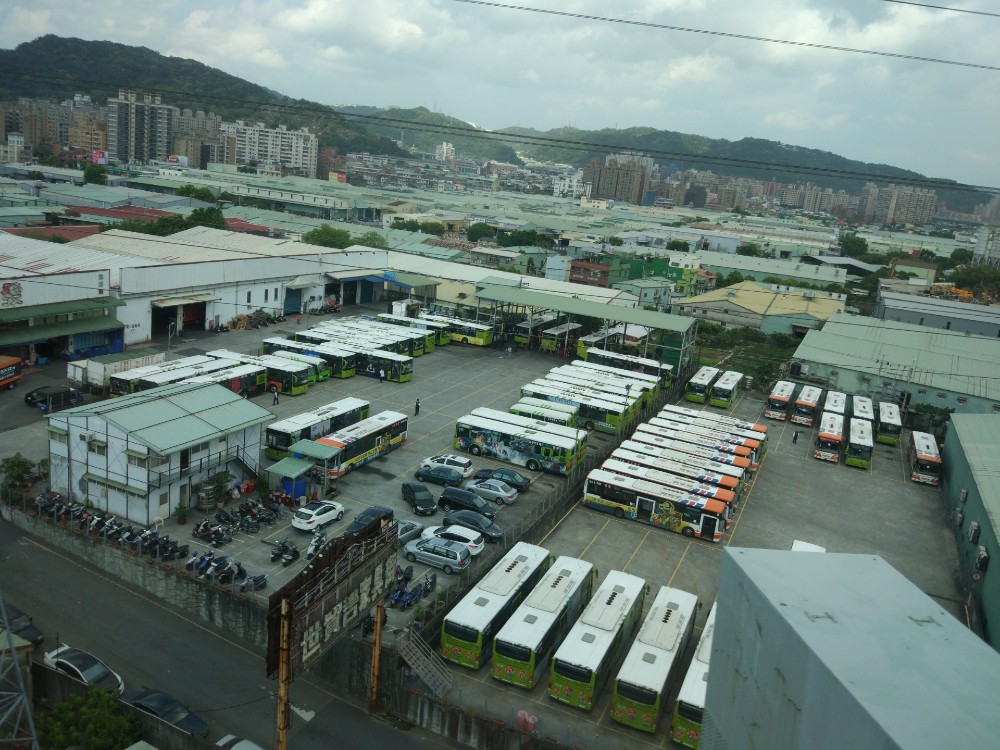
Public and Private Bus & Coach Market in East and South East Asia
South East Asia and South Asia region has a total population of 2.16 billion and 1.48 billion respectively making it around 50% of the total world population. The economy of these countries are in different stages of development some of the countries such as Singapore, South Korea, Japan are developed economies, whereas some of the countries such as Vietnam, Cambodia, Laos, Pakistan are still developing economies. The humungous population pressure and booming economies has led to an ever increasing demand for mobility in the region, leading to increased private vehicles in some countries and public transportation in some. The below table gives a snapshot of the scenario.
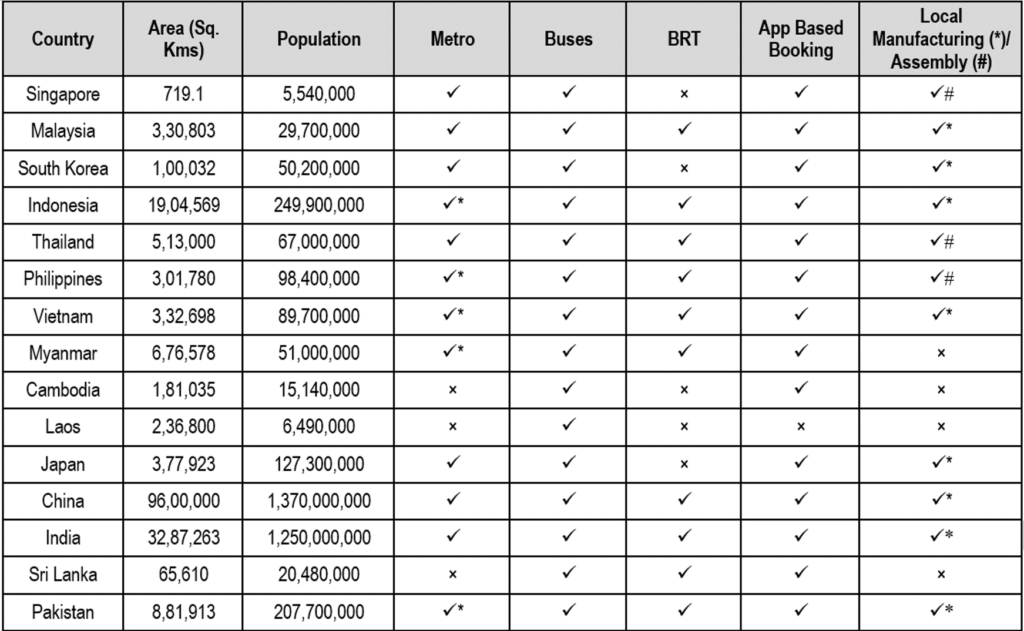
Country-wise Scenerio
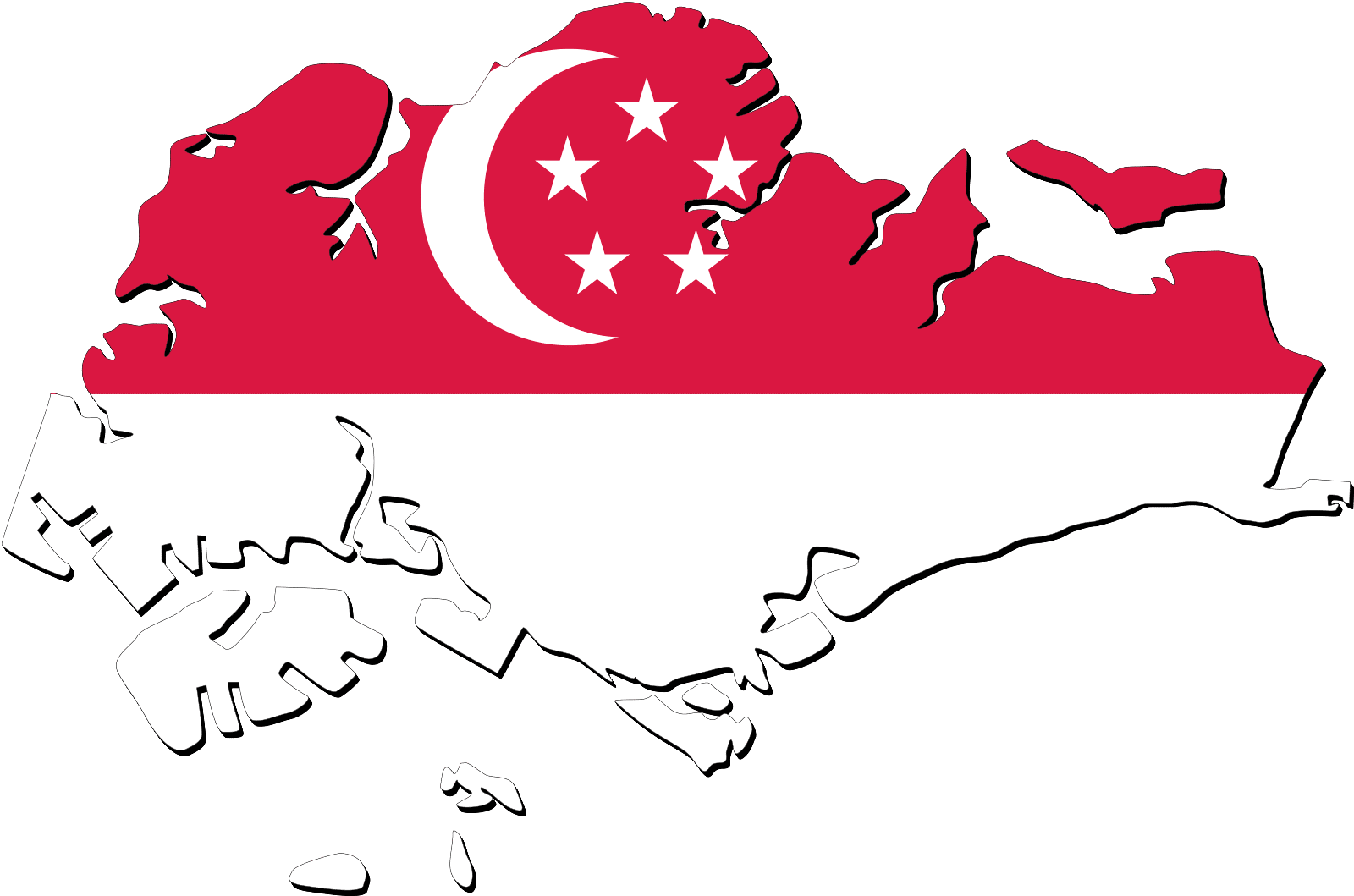 | The bus industry in Singapore is in a matured stage they have good number of types of buses and their functional differences are very clear. There is clarity in operations of public and private buses, the Bus vehicles market has a laid out strategy of local assembly. The Bus Transportation market has good number of aggregators/ technology players. The authorities are introducing different reforms to restructure the market. |
 | The Malaysian Bus transportation industry is undergoing a complete transformation due to establishment of new authorities such as SPAD and number of new initiatives such as ISBSF, myBAS, BNR, ICOP. Considering the minimal bus manufacturing capability the Bus Transportation System is quite advanced, the country boasts of a successful BRT system, adoption of clean fuel, good number of technology and players range of Bus Services. |
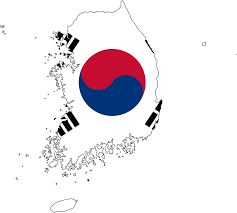 | The Bus Transportation system in South Korea is quite good, the range of Bus Services ensure a comfortable travel, round the clock bus services such as Owl Buses that were introduced based on late night telephone call volumes, make it a complete service. Mature Bus Manufacturers market ensures not only the production is locally consumed but also exported, some of the local governments have even added electric buses to their fleet. |
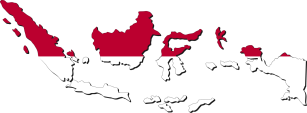 | Being the 3rd largest motorcycle market of the world, good Bus Services in Indonesia is almost absent other than in Jakarta. Jakarta was the pioneer in BRT in South and South East Asia with its 210 kms of TransJakarta BRT Line & a well-established feeder network. The manufacturers market is unorganized with only assembly capabilities, international brands are present in Indonesia however they focus only on specific segments |
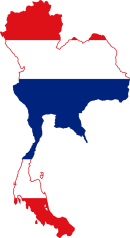 | Bus Services in Thailand are well categorized based on their areas of operation and operating agency such as Government, Private or Government-Private JV. Bangkok has good bus service network & a BRT system and most of the buses run on natural gas. Bangkok is the most visited city in the world, tourism contributes to 17% of country’s GDP. The country is also experimenting with Electric buses however hasn’t seen real success yet. |
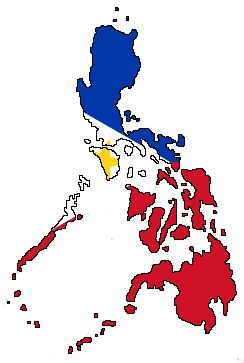 | High density Urban agglomerations and low motorization rate needs good Bus Transportation System in Philippines, but there is a shortfall of buses even in the Metro Manila region with only 110 public sector buses, to top it regulation and enforcement is shared by several agencies and is complex. 1.8 million Jeepneys are the primary mode of transportation for long and short distances. World Bank is funding the upcoming BRT of Manila. |
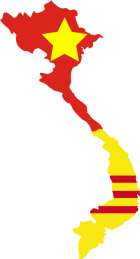 | Vietnam the motorbikes capital of the world has an organized bus transportation system of inter-provincial express buses and local bus transportation in key cities Hanoi & Ho Chi Minh City. The Bus Services are run by state owned and private companies and are partially subsidized by the government. Hanoi also has a BRT system. Vietnam has registered under 3rd NAMA component in 2016 and moving towards adopting clean fuel. |
 | The authorities in Myanmar are taking several measures such as setting up of transport authorities, public-private partnership models, ban on old vehicles, adoption of clean fuel to decongest its cites from traffic and provide efficient transportation. The bus services has been divided into 4 categories based on their function while Yangon has an average bus transportation services, Mandalay’s buses are overcrowded and unsafe. |
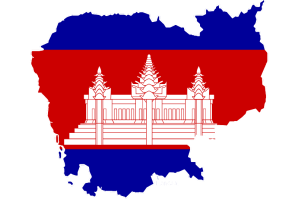 | City public transportation including bus is very poor in Cambodia. Bus services were introduced in Phnom Penh city with support of JICA and have been successful. China and Japan are also providing support to the country in further expansion of its Bus network to other parts of the country. Express bus services are much mature when compared to city services and support the tourism sector that contributes 28 % to the GDP of the country. |
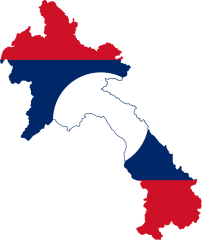 | Bus Transportation market in Laos is very small only Vientiane has a local bus service that operates on some key routes with support from JICA. Vientiane Sustainable Urban Transport Project funded by Asian Development Bank has been launched and that focuses on establishing a transportation authority, high quality of public bus transportation system etc. In absence of rail network, Express buses serve as a primary mode for intercity travel. |
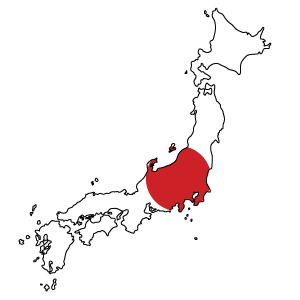 | Public Transportation System in Japan is matured, advanced and adequate for commuters. Bus Transportation acts as a feeder system as metropolitan buses within key cities supplementing rail based transportation. It also has a dense network of intercity buses. Buses are one of the key export industries and only 10 % of its production is locally consumed, but recently has seen a decline due to competition from Chinese manufactures. |
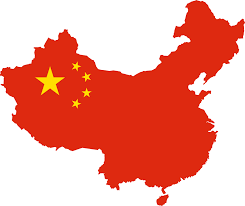 | World’s largest producer of buses China has a good public bus transportation system, fares are cheap being a socialist country, the network is extensive with facilities of interoperable Smart Cards and boasts of the most exhaustive BRT network with 20 systems serving 4.83 million/day. The country is focussing on clean fuel such as Battery Electric Vehicles (BEV), Plug-in Hybrid Electric Vehicles (PHEV) and Hybrid Electric Vehicles (HEV). |
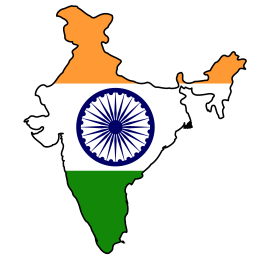 | Buses of India with highest modal share are inadequate in providing a comfortable journey to commuters, despite of modernization attempts the STUs hasn’t been able to meet demand or reduce losses. City authorities are focussing on rail based city transportation despite of high costs due to success of Delhi Metro and failure of Delhi BRT. Intercity bus services are better than that of the city and have much more comfortable options. |
 | Sri Lanka Transportation Board with private operators provide intercity & intracity bus transportation in the country. Ageing fleet is a concern for the authority and is planning to replace it. The country has enrolled in NAMA and has planned Galle BRT in Colombo with 100 electric buses co-funded by ICF. The tourist industry has registered a growth of 320% in last 7 years and that has fuelled the demand for luxury and tourist buses. |
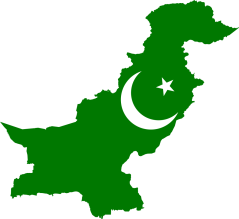 | Pakistan has taken several measures to build an efficient public Bus Transportation System such as creating transportation corporations, fleet modernization, CNG buses introduction and feeder bus system. The intercity bus system although lacks good infrastructure has good and efficient buses largely due to entry of international players in the luxury segment. Various BRT projects in the country called Metrobus have gained popularity lately. |
